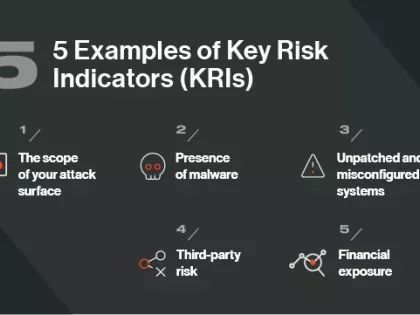How to Maximize Security Resources (and Minimize Stress)

Cyber attacks are on the rise. And while these are cause for concern, they’re not what’s keeping security leaders up at night. Instead, the challenge is one of stress and burnout.
That’s the finding of a recent survey by executive search firm Heidrick & Struggles. Respondents shared that stress related to their roles (60%) and burnout (53%) were the largest personal risks they face. However, job loss as a result of a breach was a concern for only 28%, suggesting many feel relatively secure in their roles.
This isn’t surprising.
Even more worrying is that most network intrusions (62%) now originate from a third-party vendor or partner – which puts extra pressure on everyone.
Managing the burnout
If you’re a cybersecurity or risk management leader, there are steps you can take to maximize your security resources and reduce burnout. We touched on some of them in an earlier blog, including the need to:
- Understand the common principles of stress management: Boil stress down to its basic elements by creating lists and prioritizing deadlines. Knowing what you’re dealing with can provide order and direction.
- Move from a reactive to proactive mode: Being in a constant reactive mode of responding to and prioritizing security resources in a continually evolving threat landscape and interconnected digital supply chain takes its toll. Instead of playing a game of whack-a-mole with cyber threats, take proactive steps to measure cybersecurity performance and risk by continuously monitoring your digital environment. You can automatically monitor the security status of your organization, third-party vendors, and suppliers, and even M&A targets for vulnerabilities and risks.
Lean on expert security resources
Aside from leaning on best practices and platforms that can make your organization more secure, it’s equally important that you have support in this process.
CISOs and risk management leaders are under enormous pressure to ensure their organizations are secure. The consequences of failure are significant, as cyberattacks have huge financial implications. The average cost of a data breach has soared to $44.35 million.
Bitsight Advisor Services can help.
Bitsight is more than a security ratings platform provider; we also augment your existing security resources and accelerate the maturity of your third-party risk management program (TPRM) – while reducing your workload.
To maximize your team's impact and enhance cybersecurity, we will assign you a dedicated Bitsight Advisor who specializes in leveraging data insights to guide your TPRM practices.
With the support of a trusted advisor, you can:
- Maximize TPRM ROI: Bitsight analyzes your TPRM program from the outside and prioritizes efforts to maximize the return on your investment.
- Proactively monitor and remediate third-party risk: We establish TPRM best practices that continuously reveal risk across your vendor network. With this insight, you can quickly and efficiently:
- Validate the security posture of prospective vendors – without the need for time-consuming and subjective security questionnaires.
- Ensure all new vendors have healthy cybersecurity postures and are remediating any known vulnerabilities.
- Offboard critical, but resource-intensive TPRM tasks: If you prefer, we can own the process of continuously monitoring your vendors. We can handle it all, in real-time.
- Speak the language of the board: We can help you develop board-level reports on overall risk posture and TPRM process improvements and successes. Our unique risk-based approach to reporting can also help you advocate for new initiatives and investments.
Your role is demanding and complex, but you can protect your most precious asset: time.
Contact us today to learn about how a Bitsight Advisor with years of experience working with customers to improve third-party risk can help you stay focused on your priorities – and not on carrying the weight of the world on your shoulders.


